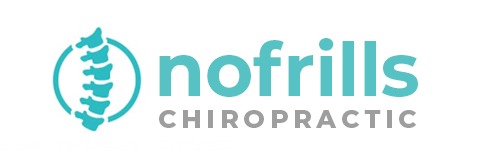Your Top FAQs
NoFrills Chiropractic can answer your top questions, dispel myths, and help you gain insights into chiropractic care in Singapore. From grasping the fundamentals of chiropractic adjustments to learning how this therapy enhances your health, we cover it all in this informative guide.


FOUNDATIONS OF CHIROPRACTIC CARE
What is chiropractic care?
Chiropractic care is a non-invasive healthcare approach that diagnoses and treats musculoskeletal disorders, mainly through manual adjustments of the spine and joints. It aims to improve alignment, alleviate pain, and enhance overall well-being without surgery or
medication.
At our clinic, our dedicated team comprises diverse and highly skilled chiropractors and healthcare professionals, all deeply committed to ensuring your long-term well-being. To maintain the highest standards of care, we’ve established a rigorous internal training program. This ensures a consistent and exceptional experience for you.
Our collaborative approach emphasizes the seamless operation of our entire team as a cohesive unit. This allows you the flexibility to move between our centers as needed, ensuring that your well-being remains our top priority at every step of your health journey.
Is bone cracking a common practice for chiropractors?
Contrary to popular belief, this sound isn’t bones cracking; instead, it results from the release of gas bubbles within the joint fluid.
The primary aim of these adjustments is to restore proper alignment, alleviate pain, and enhance joint function.
I can crack my own neck and back. Why should I see a chiropractor?
GUIDELINES FOR SELECTING A CHIROPRACTOR
Seek Recommendations
Ask friends, family, or your primary healthcare provider for recommendations, as they may know reputable chiropractors in your area.
Schedule a Consultation
Arrange a meeting with the chiropractor to ask questions and evaluate their communication skills and approach to care. Ensure they take the time to understand your condition before making recommendations.
Explore Specialisations
If you have specific health concerns, inquire about the chiropractor’s expertise in addressing them. Some specialize in areas like sports injuries, pregnancy care, or pediatric chiropractic.
Discuss Techniques Used
Have a conversation about the chiropractic techniques the practitioner uses to ensure they align with your preferences and comfort level.
Consider Location and Accessibility
Evaluate the location and accessibility of the chiropractic clinic. Choosing a convenient location can simplify attending regular appointments.
Clarify Costs and Insurance
Understand session costs and ask about health insurance acceptance. Clear financial information will help you plan your care effectively.

RIGHT PROVIDER FOR YOU
How do I choose a chiropractor?
Cleanliness
Ensure the clinic maintains a hygienic and clean environment.
Communication
Evaluate the chiropractor’s ability to listen to your concerns and clearly explain treatment options.
Care Plan
A reputable chiropractor should tailor a care plan to meet your specific needs.
Patient Reviews
Read reviews and testimonials to gauge patient satisfaction and experiences.
Techniques
Inquire about the chiropractic techniques used and whether they are evidence-based.
Cost Transparency
The clinic should be transparent about treatment costs and any additional fees.
Referrals
A chiropractor should be open to referring you to other healthcare providers if needed.
CHOOSING YOUR PROVIDER
Common questions to ask a chiropractor before treatment
In your chiropractic consultation, it’s crucial to gather essential information. Consider the following questions:
What are your qualifications and experience?
Can you elucidate the chiropractic techniques you employ?
Do you have experience in treating my specific condition?
What should I anticipate during a typical chiropractic session?
How many sessions do you estimate I will need?
Are there risks or side effects associated with chiropractic care?
Can you furnish references or patient testimonials?

CONDITIONS THAT CHIROPRACTORS CAN HELP
Sciatica
Scoliosis
Lower Back Pain
Slipped Disc
Arthritis
Neck Pain
Fatigue
Shoulder Pain
Bad Postures
Migraines & Headaches
Pregnancy-Related
It’s essential to recognise that the effectiveness of chiropractic care can vary from person to person, and not all conditions can be solely addressed through chiropractic interventions. Futhermore, chiropractors often collaborate with other healthcare professionals to provide comprehensive care when needed. If you are considering chiropractic care for a specific condition, it is recommended to consult with a qualified chiropractor, discussing your individual needs and objectives.
Who can benefit from chiropractic care?
1. Can I undergo chiropractic adjustments post-surgery?
Chiropractic care after surgery varies based on factors like the type of surgery and your health condition. It’s vital to share your surgery history and medical background with your chiropractor. Sometimes, adjustments may not be safe, especially with surgical implants, recent wounds, or certain medical issues.
Your chiropractor will work alongside your healthcare team to ensure adjustments are safe and beneficial for your recovery after surgery.
2. Is chiropractic care secure during pregnancy?
Chiropractic care can be safe and beneficial for pregnant women when administered by a qualified chiropractor with experience in prenatal care.
Pregnancy often brings about musculoskeletal discomfort like back pain and sciatica, which chiropractic adjustments can help alleviate.
Practitioners trained in prenatal care use gentle and pregnancy-specific techniques to ensure safety for both the mother and the baby.
It’s advisable to consult with your obstetrician or healthcare provider before seeking chiropractic care during pregnancy to confirm its suitability for your unique situation.
3. Is chiropractic care appropriate for babies and children?
Chiropractic care for infants and children, when overseen by a qualified and experienced chiropractor, can be both safe and beneficial.
Parents often seek chiropractic care to address issues like colic, ear infections, or musculoskeletal concerns in their children.
Paediatric chiropractors employ gentle, age-appropriate techniques designed specifically for children.
Choosing a chiropractor with expertise in paediatric care is essential, and consulting your child’s paediatrician before starting chiropractic adjustments is advisable.
The safety and suitability of chiropractic care for children depends on their unique health circumstances and requirements.
4. Is chiropractic care safe for the elderly?
Chiropractic care can be safe for the elderly when administered by a qualified and experienced practitioner who understands the unique needs and conditions affecting older individuals.
However, seniors should consult with their healthcare providers to ensure chiropractic care is suitable for their specific health concerns.
While chiropractic adjustments may offer relief from certain musculoskeletal issues, the practitioner should conduct a thorough assessment and tailor techniques to accommodate factors such as frailty, osteoporosis, or other age-related considerations, ensuring both safety and effectiveness.
FINANCIAL ASPECTS
How much is chiropractic care in SG?
Does insurance in Singapore cover Chiropractic care?
Chiropractic care is typically not covered by standard MediShield or Integrated Shield Plans (IP) in Singapore.
However, some private health insurance policies or employee benefit packages may offer coverage for chiropractic care.
It’s important to check with your insurance provider to confirm if chiropractic care is included in your policy and to what extent. If coverage is available, make sure you have the required documentation and receipts for reimbursement.

Chiropractic care costs in Singapore can vary based on factors such as the chiropractor’s experience, clinic location, and the complexity of your condition.
Typically, a single session ranges from SGD 80 to SGD 150 or more. Initial consultations may be slightly higher due to assessments and evaluations.
It’s advisable to discuss pricing and payment options during your initial consultation to understand the costs associated with your personalized care plan.
COMPARING CHIROPRACTIC CARE WITH ALTERNATIVE MODALITIES
What is the difference between chiropractic care and other therapies?
Comparison between Chiropractic Care and Osteopathy
- Philosophy: Chiropractic care centers on diagnosing and treating neuromusculoskeletal disorders, particularly those related to the nervous system, through manual adjustments. In contrast, Osteopathy adopts a more holistic perspective, emphasizing overall musculoskeletal health and considering the well-being of the entire body, including organs and systems.
- Techniques: Chiropractors primarily employ spinal adjustments to rectify misalignments and enhance proper nerve function. Osteopaths utilize a broader array of techniques, encompassing manipulation, stretching, and soft tissue work, to address musculoskeletal issues and promote overall health.
- Scope of Practice: Chiropractors typically specialize in the spine and nervous system, while osteopaths may incorporate a wider range of techniques and may also offer primary care services.
Comparison between Chiropractic Care and Physiotherapy
Approach:
Comparison between Chiropractic Care and Traditional Chinese Medicine (TCM)
- Approach: Chiropractic care revolves around the concept of spinal alignment and its influence on overall health. In contrast, Traditional Chinese Medicine (TCM) is a holistic system encompassing acupuncture, herbal medicine, dietary therapy, and energy balancing through practices like Qi Gong.
- Philosophy: Chiropractic care is grounded in Western medicine and anatomy, while TCM is founded on ancient Chinese principles such as Yin and Yang and the flow of Qi (energy) within the body.
- Methods: Chiropractors employ manual adjustments, whereas TCM practitioners utilize acupuncture, herbal remedies, and other modalities to address imbalances in the body’s energy.
Comparison between Chiropractic Care and Massage Therapy
- Focus: Chiropractic care primarily targets musculoskeletal issues through the correction of spinal misalignments. In contrast, massage therapy concentrates on relieving muscle tension, promoting relaxation, and enhancing circulation.
- Techniques: Chiropractors employ spinal adjustments and joint manipulation, whereas massage therapists utilize hands-on techniques to manipulate muscles and soft tissues.
- Goals: Chiropractic care seeks to restore proper nervous system function, while massage therapy primarily aims at addressing muscle tension and providing stress relief.
Comparison between Chiropractic Care and Medication
- Approach: Chiropractic care primarily utilizes manual adjustments to target the root cause of musculoskeletal issues, while medication treats symptoms and may not address the underlying cause.
- Scope: Chiropractors abstain from prescribing medication and concentrate on non-pharmaceutical interventions. Conversely, medical doctors predominantly prescribe medication as a primary form of treatment.
Comparison between Chiropractic Care and Pain-Relief Patches
- Method: Chiropractic care involves hands-on manipulation of the spine and joints to target musculoskeletal issues, while pain-relief patches deliver topical relief through the absorption of pain-relieving substances into the skin.
- Duration of Effect: Chiropractic adjustments are associated with potentially longer-lasting effects on musculoskeletal issues, in contrast to pain-relief patches, which provide temporary relief.
Comparison between Chiropractic Care and Exercise
- Role: Chiropractic care predominantly emphasizes spinal alignment and adjustments to enhance musculoskeletal function, whereas exercise serves as a complementary approach promoting strength, flexibility, and overall fitness.
- Collaboration: Chiropractors may suggest specific exercises to bolster spinal health, while physiotherapists and personal trainers are typically tasked with designing exercise regimens.
Comparison between Chiropractic care and Bone Setting
Chiropractic care centers on the alignment and manipulation of the spine and musculoskeletal system, aiming to enhance overall health and alleviate various conditions like back pain, neck pain, and headaches. A key modality employed by chiropractors is spinal adjustments.
In contrast, bone setting is a traditional practice involving the manual manipulation of bones and joints to address fractures, dislocations, and other orthopaedic issues. This method is commonly administered by traditional healers or practitioners with expertise in bone setting techniques. Despite some shared techniques, chiropractic care is a more comprehensive approach, addressing a broader spectrum of musculoskeletal conditions and promoting overall wellness.
METHODS & INSTRUMENTS IN CHIROPRACTIC PRACTICE
What is a chiropractic adjustment?

What are common chiropractic adjustment techniques?
Several chiropractic adjustment techniques are available, and the selection of a specific method relies on factors such as the patient’s condition, preferences, and the chiropractor’s proficiency. Among the commonly employed chiropractic adjustment techniques are:
Diversified Technique
Employing manual adjustments, this technique stands as the most traditional and widely adopted method, wherein the chiropractor utilizes their hands to administer a swift, controlled thrust to a specific joint or vertebra.
Activator
Chiropractors have the option of employing a handheld instrument known as an Activator, which facilitates the delivery of gentle, low-force adjustments to the spine or joints.
Gonstead Technique
Precise assessment and adjustments to specific spinal segments characterize this technique, aiming to address misalignments effectively.
Thompson Technique
Patients are positioned on a specialized table featuring drop sections, enabling the chiropractor to apply a low-force thrust to the spine.
Flexion-Distraction Technique
Tailored for conditions like herniated discs, this technique incorporates a gentle, rhythmic pumping motion to achieve spine decompression and mobilization
Graston Technique
To perform soft tissue mobilization and alleviate muscle and connective tissue restrictions, chiropractors utilize handheld stainless steel instruments.
It is crucial to recognize that the efficacy of chiropractic care may differ among individuals, and not all conditions can be exclusively addressed through chiropractic methods. Moreover, chiropractors frequently collaborate with other healthcare professionals to deliver comprehensive care when necessary. If you are contemplating chiropractic care for a particular condition, it is advisable to consult with a qualified chiropractor. Discuss your individual needs and goals to ensure a thorough understanding of the most suitable approach for your situation.
SAFETY OF CHIROPRACTIC CARE
Are chiropractic adjustments painful?
Chiropractic adjustments are generally characterized by minimal pain. Most individuals describe a sensation of discomfort or pressure during the adjustment, but it is typically not categorized as painful.
In fact, many patients report experiencing relief from pain and enhanced mobility after undergoing an adjustment. Chiropractors undergo training to employ the appropriate amount of force and precision, prioritizing the comfort and safety of their patients.
Maintaining open communication with your chiropractor is essential, especially regarding any discomfort or concerns during the adjustment. This enables them to make necessary adjustments to the technique or pressure applied.
It’s worth noting that some soreness or mild discomfort post-adjustment is normal and typically temporary, similar to the sensations one might feel after exercising or stretching.
Is chiropractic care safe?
What are common chiropractic adjustment tools?
Chiropractors utilize a range of tools and equipment to facilitate chiropractic adjustments, such as:
Chiropractic Table
Specialized tables equipped with movable sections and drop mechanisms designed to enhance adjustments and ensure patient comfort.
Activator Instrument
Handheld devices capable of delivering controlled, low-force adjustments.
X-ray or Imaging Equipment
Chiropractors may employ X-rays or other imaging techniques to assist in the diagnosis and planning of treatment.
PROCESS OF CHIROPRACTIC CARE
What is the process of seeing a chiropractor?
For those embarking on their initial visit to a chiropractor, here’s a step-by-step guide to familiarize you with the process:
1. Arrival at our chiropractic centre:
Upon reaching our centre, anticipate minimal wait times, usually just enough to complete initial paperwork. This paperwork is crucial for our health partners and your attending chiropractor to understand your health history and current needs. We recommend arriving 10 minutes before your appointment to complete this paperwork.
2. Consultation with our chiropractor:
The initial consultation, lasting around 20 minutes, is a pivotal phase in your chiropractic journey. During this comprehensive spinal check-up, your chiropractor will concentrate on understanding your condition and concerns. They will elucidate the causes of joint dysfunction, the role of chiropractic adjustments, and the various benefits chiropractic care can provide.
If it’s your first spinal assessment, this is an ideal opportunity to have your queries addressed by the chiropractor. Subsequently, a series of tests will be conducted to gain a holistic understanding of your spinal health.
3. Your full spinal examination process:
Your chiropractor will conduct a physical examination and palpation of your spine. Our affable health partners will then perform additional spinal examinations, including:
- Visual posture assessment
- Posture photo analysis
- Bilateral weight distribution assessment
- Computerised spinal range of motion measurement
- Surface electromyography scan
4. Spinal X-rays:
Based on the initial consultation and examinations, our chiropractors might recommend spinal X-rays to assess the severity and degree of degeneration in your spine. This step is crucial for your safety and ensures the chiropractor has a comprehensive understanding of your condition.
5. Report of findings
After your X-rays, you’ll revisit the chiropractor for a second consultation to go over the results of your tests and X-rays. This session typically spans about 45 minutes and involves a discussion on whether chiropractic care can provide relief for your condition or if consideration should be given to other specialists. If chiropractic care is recommended, the chiropractor will perform adjustments during this session and offer their personalized recommendation for your condition.
6. Why adjustments are not included in the check-up
Our chiropractic spinal check-up concentrates solely on assessment and excludes adjustments. We are dedicated to delivering personalized care, acknowledging that adjustments may not be suitable for everyone. By omitting adjustments from our check-ups, we prioritize your well-being, ensuring you pay only for services tailored to your needs and avoiding charges for services that may not be safe or necessary for you.
If adjustments are recommended based on the assessment results, they are discussed and scheduled separately after the check-up. This approach empowers you to make informed decisions about your care, ensuring a customized and effective chiropractic experience.
7. Regular adjustments
Opting for regular adjustments means our team will collaborate with you to establish a schedule for weekly or monthly visits, marking the commencement of your pain relief journey. Your journey to wellness begins here!
Are there re-assessments and check-ups during chiropractic care?
Certainly, chiropractic care frequently incorporates re-assessments and check-ups. Following the initial evaluation, chiropractors devise a customized care plan based on your requirements. Periodic re-assessments enable them to monitor your progress, make any necessary adjustments to the care plan, and ensure your positive response to the treatment.
How many chiropractic adjustments will I need?
The quantity of chiropractic adjustments necessary varies from person to person and hinges on factors such as the severity of your condition, your responsiveness to the adjustments, and your health objectives. Your chiropractor will engage in discussions with you about your individualized care plan.
What is included in the chiropractic care plan?
Typically, a chiropractic care plan encompasses a schedule of adjustments and any additional therapies or exercises deemed essential by the chiropractor. The plan is tailored to address your specific needs and health objectives.
What is the difference between ad-hoc chiropractic adjustments and a care plan?
Ad-hoc chiropractic adjustments pertain to sporadic or as-needed visits to a chiropractor for immediate relief from pain or discomfort. In contrast, a care plan constitutes a structured and comprehensive approach to chiropractic care, involving a predetermined schedule of adjustments and therapies aimed at addressing underlying issues, fostering long-term wellness, and preventing future problems. Care plans are generally formulated to provide continuous, proactive care rather than merely addressing acute symptoms.
Book your initial chiropractic visit
hello@nofrillschiropractic.com
Phone
9007 1085
Open Hours
Mondays - Sundays: 9am-6pm
We're here whenever you need us
hello@nofrillschiropractic.com
Contact Us
9007 1085
Open Hours
Monday-Sundays:
10am to 7pm
Address
279 Tanjong Katong Rd
S437062


